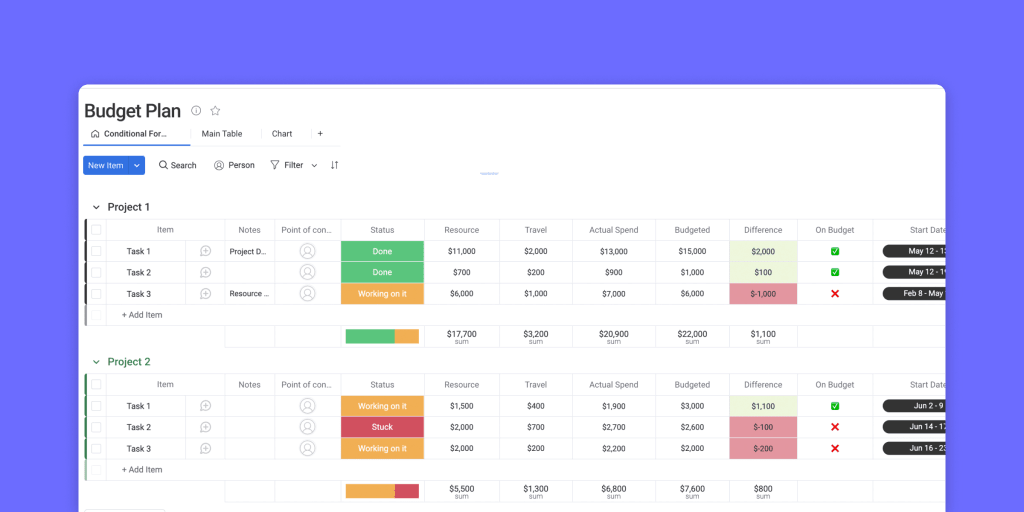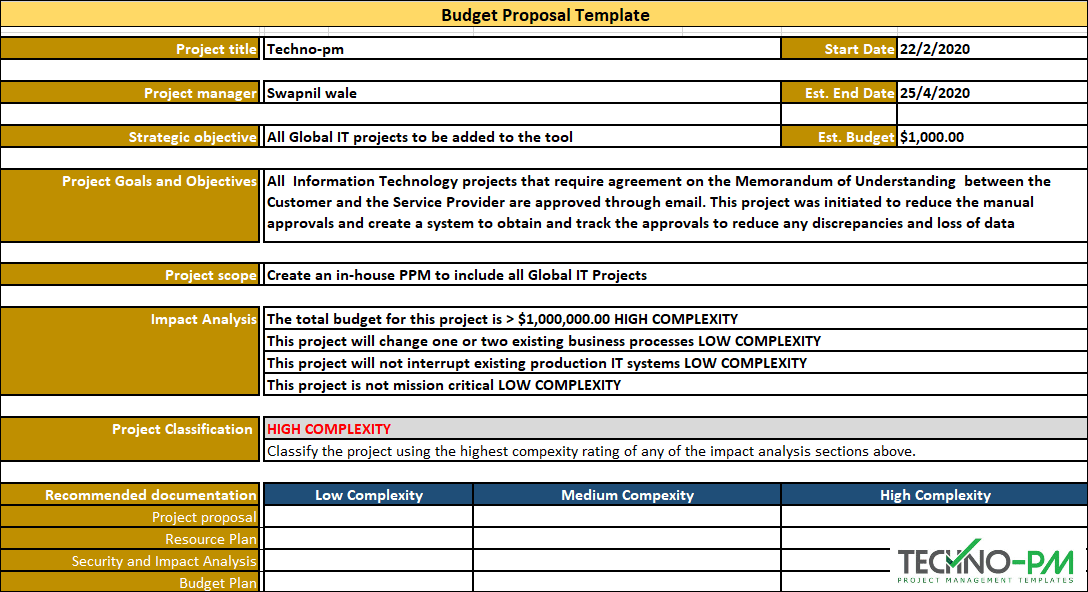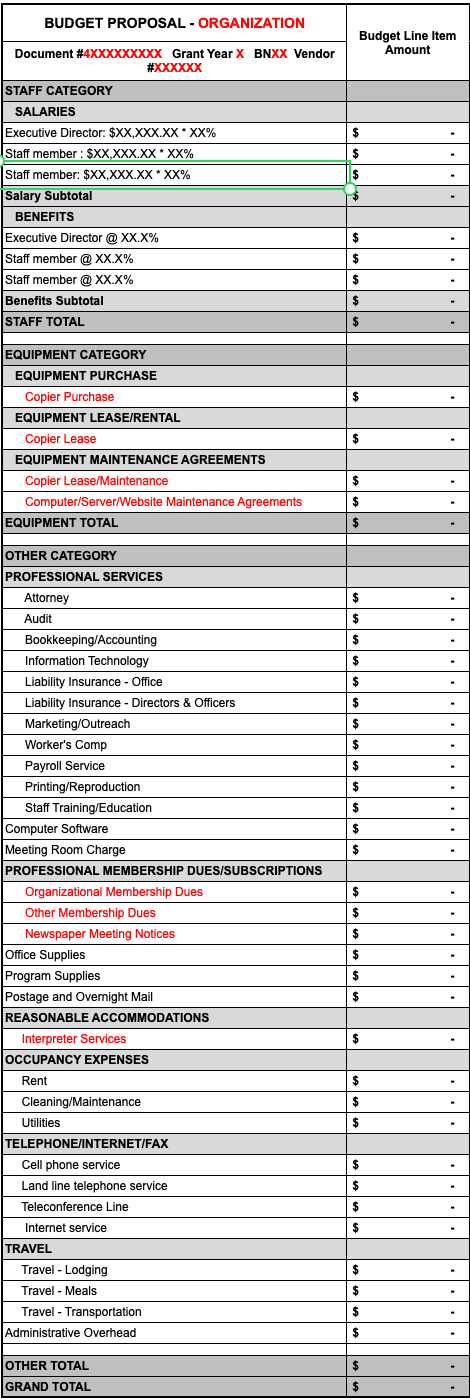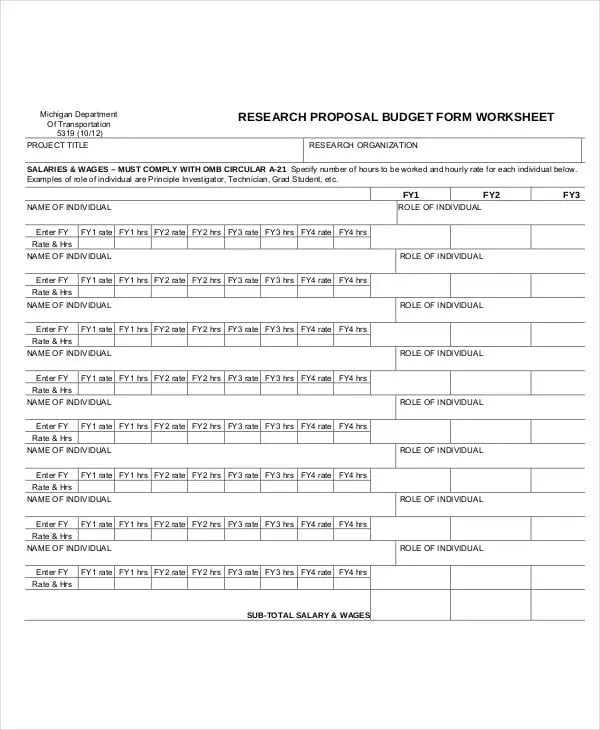Let’s face it — new business projects can require a lot of buy-in and resources. Persuading relevant stakeholders to invest in a new project isn’t easy — and that’s where a budget proposal template comes in as your tool to effectively communicate to them exactly where each dollar goes.
In this article, we’ll walk you through how easy it is to create your next budget proposal with our fully customizable budget proposal template so you’ll be ready to win the hearts, minds, and pockets of investors.
What is a budget proposal template?
A budget proposal template is a reusable document with categories for every potential cost for any project or activity a company or organization might undertake. A budget proposal is a formal document you use to estimate a project’s costs. It’s not enough to show how much a project costs without context.
A budget proposal template helps break down the total cost into several categories getting super granular. This helps stakeholders visualize approximately how much capital a project will need, and where it will go.
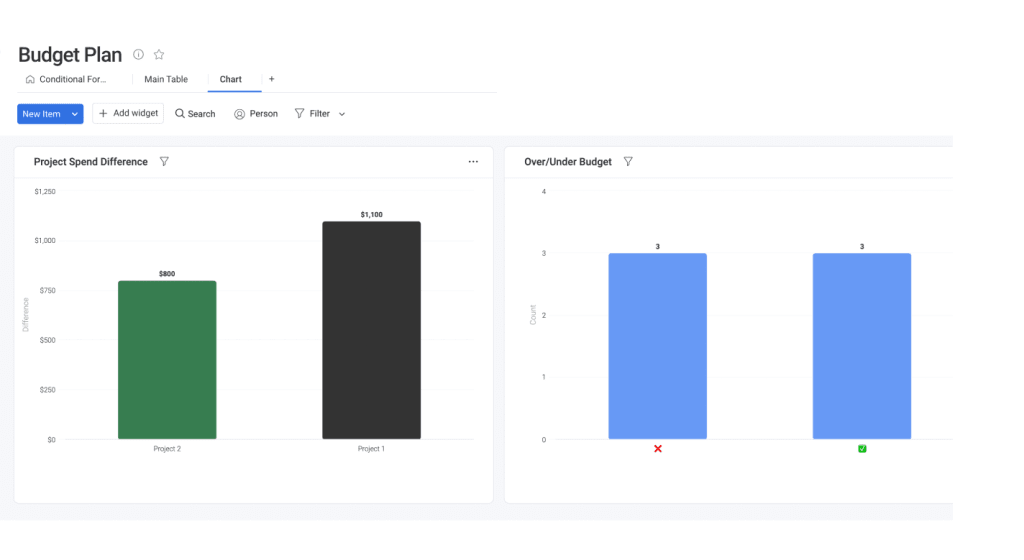
A full budget proposal can also contain attached documents, including:
- Budget proposal letter
- Project description
- Timeline
- Expected outcomes
Why use a budget proposal template?
The main reason you’d need a budget proposal template for any project is to deliver a professional proposal that effectively persuades others to invest in or approve the project..
Most conversations with stakeholders are based on a sort of cost-benefit analysis, so simply showing why the project is needed won’t work. Stakeholders must know that the benefits of completing the project outweigh its costs.
A budget proposal template helps you prep for detailing those costs to the stakeholders in a formal budget proposal document or after you’ve received an RFP template. This way, they can figure out if the project is worth backing. Once the project kicks off, the budget proposal document helps you allocate resources to the right areas and lets you track your actual costs against projections.
Compare real versus expected costs
After completing the project, you can evaluate actual costs against your proposal to see how well you performed. Again, a well-structured template makes this process a breeze. You can then take any insights and make more accurate budget proposals for the next project.
Don’t miss out on crucial details
It can be hard to remember every cost category you need to cover when writing a budget proposal. That’s what a budget proposal template is for. It covers all major cost categories with fields for expected amounts.
You can also improve on and reuse that template each time you need to draft a new proposal. It saves you time and ensures you don’t miss anything. A well-researched and detailed proposal makes you look professional and trustworthy, inspiring stakeholder confidence in the project.
What are some examples of budget proposal templates?
Ready to dive into the actual templates? Let’s take a look at a few different budget proposal templates and how you can use them.
Project budget proposal template
Below, you can see a detailed project budget proposal template. It has dedicated fields for goals and objectives, project scope, and the potential impacts of completing the project successfully.
It’s a great idea to include this information because it helps justify the project. The more evidence you can provide of a project’s potential benefits, the easier it will be to get buy-in.
Organization budget proposal template
Here, we have a budget proposal template for an entire organization. Key executives, such as the CFO, might request something like this.
As you can see, this template breaks expenses down by categories like legal fees, audits, IT costs, and more. Plus, it includes the total amount for each category and subcategory. This allows stakeholders to scrutinize each cost, helping to gain their confidence and buy-in.
Marketing budget proposal template
Budgeting is important to marketing initiatives and campaigns because it allows marketers to maximize the effectiveness of their spending. Marketers have to run campaigns, and campaigns cost money. The marketing department has to justify each one to management. Therefore, they’ll be going through a lot of budget proposals — so a dedicated template for marketing budgets comes in handy.
This template breaks down costs into the research, communications, networking, and event categories. If you rely more on digital marketing channels, you can adjust the template to reflect that.
Research budget proposal template
Researchers are no strangers to budget proposals. They have to attach these to their grant proposals in order to win funding for their research studies.
This proposal template covers the salaries of each researcher involved in a project. Each entry has a spot to list the individual’s name, role, rate, and estimated hours to calculate the approximate funding needed in the proposed budget.
monday.com’s budget proposal template
monday.com’s budget proposal template is completely customizable so you can use to create a perfect proposal for any project or use case. Thanks to our drag-and-drop editor, you can easily tailor it to your needs, editing columns, widgets, formulas, and more. You can also color-code it, create custom labels, and make it easy to understand visually. There are different views available, so you can visualize your template as a table or a Gantt chart.
Cross-department collaboration is vital for many types of budget proposals, and monday.com makes this a breeze. You can easily share the board with relevant teams with the click of a button, synchronize data across boards and departments, and much more.
That makes it easy to provide a neat budget proposal to managers, executives, and anyone else who needs it. If you currently work with spreadsheets, you can easily import Excel budget spreadsheets or Google Sheets proposal data into monday.com as well. Our Work OS is equipped to serve as your complete finance CRM, too. Check out a few more related templates.
Related monday.com templates
High-level marketing budget template
A marketing department makes more budget proposals than most others since they’re in charge of running campaigns. A high-level marketing budget template can help them plan their campaigns ahead of time. This helps them make more persuasive and accurate proposals, which leads to more effective and efficient campaign spending. Plus, they can track their spending with ease and set up notifications to make sure they don’t go over spending limits.
Expense tracking template
Your budget won’t be too useful if you don’t track your expenses, and that’s why an expense tracking template can come in handy. Once your proposal is approved, you should grab this template right away. In your template, you can add, remove, or rearrange any categories you want to create a setup that works for you. Plus, notifications make it easy to know if certain payments are about to come due.
Finance requests template
Whenever someone in your organization needs funding for something in that budget proposal, such as a purchase or reimbursement for travel, you can make it easier to organize them for approval by requesting that they submit a finance request. But monitoring multiple finance requests can become overwhelming fast. You need to make sure each request’s reason is valid, check that the company has funds available, and track the progress of each one the whole way.
With a good finance requests template, that struggle becomes a thing of the past. You can easily gather all requests with a customizable form. Then, the template has several pre-built finance request stages, helping you manage and track each request at a glance. Just set up some deadlines and notifications, and your team can stay on track with all finance requests.
FAQs about budget proposal templates
How do you write a budget proposal?
To write a budget proposal, you’ll need to brainstorm all costs associated with the project. You should also be able to concretely define the project’s goal for which you’re creating a budget. Additionally, you should know the project’s estimated return.
From there, you can organize costs into direct costs and general/administration costs, and you can even break these down into subcategories. Using a budget proposal template makes this much easier because all the categories will be there. You’ll simply have to estimate their amounts.
What are the parts of a budget proposal?
Budget proposals may differ in their look depending on your industry, organization size, and goals. However, most budget proposals generally have some common pieces:
- Goal, project name, or purpose: This is relatively self-explanatory — this is the main goal you hope to accomplish. Ideally, you want a mission statement written out here.
- Direct costs: This section contains the costs associated directly with completing the project. For instance, if the project involves making a new product, the labor involved might be a direct cost. These may be broken out into subsections by categories.
- General and administration: These are costs like accounting expenses, support staff and customer service, maintenance, and most other costs that aren’t directly involved in completing the project. These are sometimes called indirect costs.
- Total: Each section and subsection may have its own total. There will also be a grand total for all costs at the bottom.
Why do I need a budget proposal?
A budget proposal is useful for several reasons. For one, it helps you see if a project is viable. If you have an estimate for a project’s potential returns, you’ll need to weigh it against the costs. Even if the project is viable, having a detailed budget proposal helps you get buy-in from all stakeholders. It reassures the stakeholders that the costs are worth it.
Once the project kicks off, you can use your budget proposal to allocate resources accordingly and continually evaluate your actual spending against the budget. This will help you minimize the chances of exceeding your budget and adjust spending as needed.
